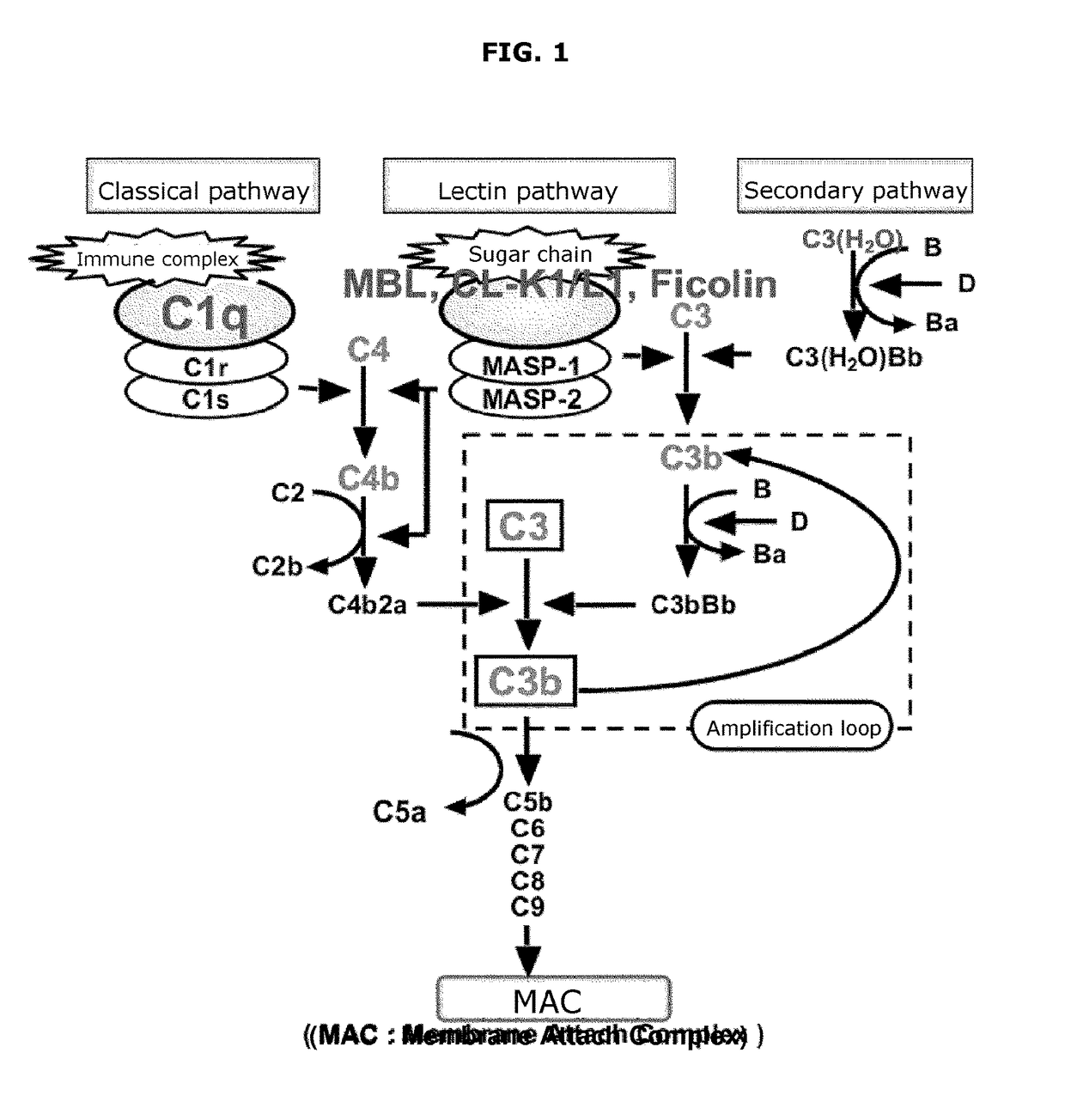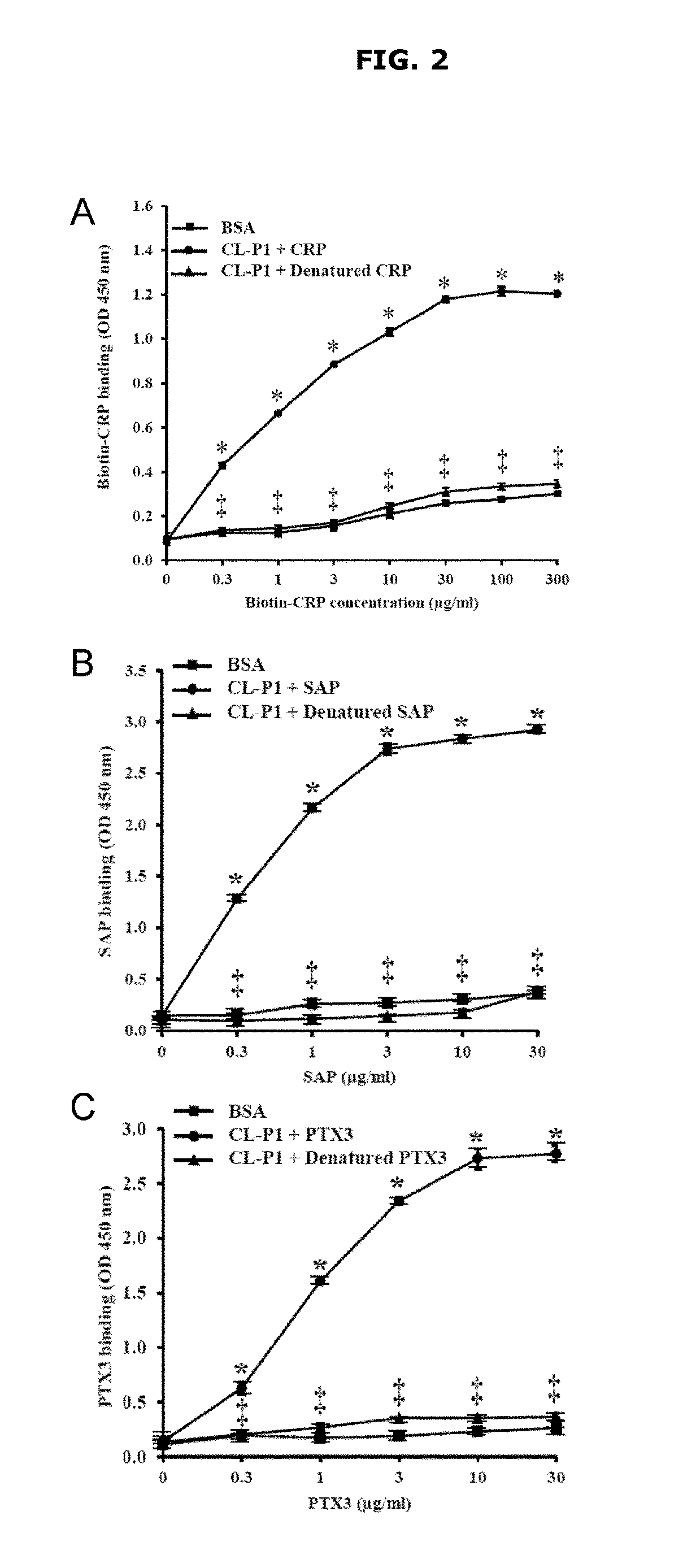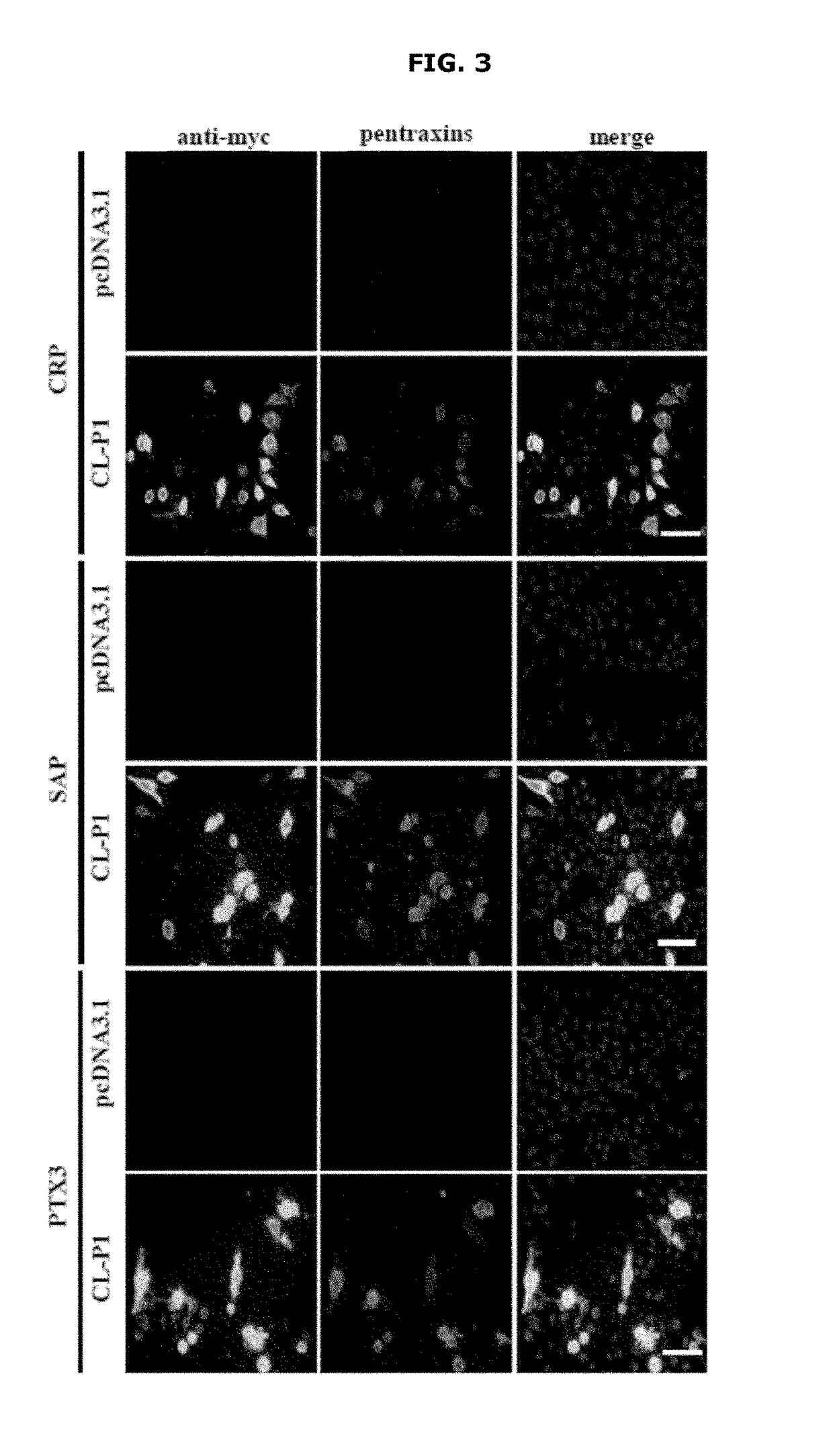Method and kit for examining complement system
a complement system and kit technology, applied in the field of methods and kits for examining the complement system, can solve the problems of variation in the sensitivity of sheep erythrocytes, excessive activation of the complement system, and imposing severe tissue damage on an organism
- Summary
- Abstract
- Description
- Claims
- Application Information
AI Technical Summary
Benefits of technology
Problems solved by technology
Method used
Image
Examples
example 1
Evaluation of Binding Between CL-P1 and PTXs
1-1. Evaluation Using ELISA System
[0138]Binding between CL-P1 extracellular domain and PTXs (CRP, SAP and PTX3) was evaluated by using ELISA. The results are shown in FIGS. 2A to 2C. CRP, SAP and PTX3 bind to CL-P1 extracellular domain specifically and dose-dependently, and they lost the ability to bind to CL-P1 extracellular domain when they were heat-denatured.
1-2. Evaluation Using Cell System
[0139]Binding between CL-P1 and PTXs was evaluated by using CHO / ldlA7 cells. As shown in FIG. 3, while CRP, SAP and PTX3 were co-localized with CL-P1 in CL-P1 expression cells, none of CRP, SAP, and PTX3 was detected in the cells expressing pcDNA3.1 control vector. This indicates that CRP, SAP and PTX3 bind to CL-P1 on the cell surface. A mean fluorescent intensity was calculated from each fluorescent image, and a binding amount of CRP, SAP or PTX3 relative to the CL-P1 expression amount was compared. The binding amount of CRP to CL-P1 was in a lowe...
example 2
Evaluation of Complement Activation Early-Phase Reaction Induced by Binding Between CL-P1 and PTXs
2-1. Evaluation of Complement Activation Early-Phase Reaction Using ELISA System
[0140]Induction of complement activation early-phase reaction by binding between CL-P1 extracellular domain and PTXs was evaluated by using ELISA. As shown in FIG. 5, in the presence of human complement serum, increase in C3d deposition amount depending on addition of CRP was observed in a CL-P1 extracellular domain-immobilized well. When C1q depleted serum was used, C3d deposition amount in a CL-P1 extracellular domain-immobilized well increased by addition of CRP, SAP or PTX3, and this increase in C3d deposition amount was further enhanced by using C1q depleted serum supplemented with C1q (FIG. 6). These indicate that CRP, SAP and PTX3 bind to extracellular domain of CL-P1, and activate the complement activation early-phase reaction via C1q to induce deposition of C3d.
2-2. Evaluation of Complement Activati...
example 3
Evaluation of Complement Activation Amplifying Reaction Induced by Binding Between CL-P1 and PTXs
3-1. Evaluation of Complement Activation Amplifying Reaction Via CFB Using ELISA System
[0142]Induction of the complement activation amplifying reaction by binding between CL-P1 extracellular domain and PTXs was evaluated by using ELISA. When CFB depleted serum supplemented with CFB was used, further increase in C3d deposition amount depending on the addition of CRP, SAP and PTX3 in a CL-P1 extracellular domain-immobilized well was observed, as compared with the case where CFB depleted serum was used (FIG. 11). These indicate that CRP, SAP and PTX3 bind to extracellular domain of CL-P1, and activate the complement activation amplifying reaction via CFB to induce deposition of C3d.
3-2. Evaluation of Complement Activation Amplifying Reaction Via CFB Using Cell System
[0143]Induction of complement activation amplifying reaction by binding between CL-P1 and PTXs was evaluated by using CL-P1 ex...
PUM
 Login to View More
Login to View More Abstract
Description
Claims
Application Information
 Login to View More
Login to View More - R&D
- Intellectual Property
- Life Sciences
- Materials
- Tech Scout
- Unparalleled Data Quality
- Higher Quality Content
- 60% Fewer Hallucinations
Browse by: Latest US Patents, China's latest patents, Technical Efficacy Thesaurus, Application Domain, Technology Topic, Popular Technical Reports.
© 2025 PatSnap. All rights reserved.Legal|Privacy policy|Modern Slavery Act Transparency Statement|Sitemap|About US| Contact US: help@patsnap.com



